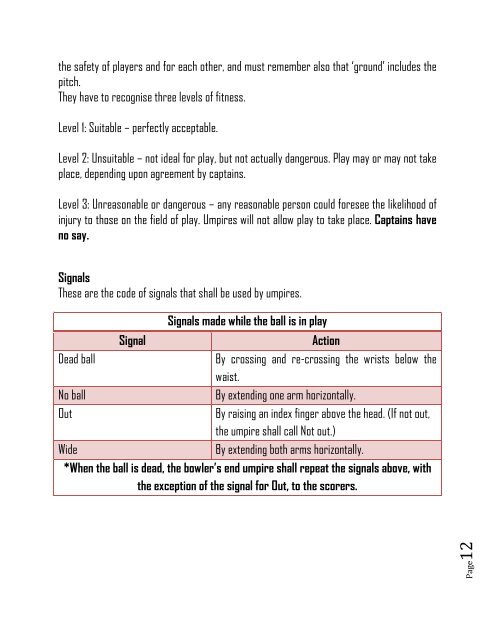CRICKET UMPIRING TRAINING OFFICERS MANUAL - Usacua.com
CRICKET UMPIRING TRAINING OFFICERS MANUAL - Usacua.com
CRICKET UMPIRING TRAINING OFFICERS MANUAL - Usacua.com
You also want an ePaper? Increase the reach of your titles
YUMPU automatically turns print PDFs into web optimized ePapers that Google loves.
the safety of players and for each other, and must remember also that ‘ground’ includes the<br />
pitch.<br />
They have to recognise three levels of fitness.<br />
Level 1: Suitable – perfectly acceptable.<br />
Level 2: Unsuitable – not ideal for play, but not actually dangerous. Play may or may not take<br />
place, depending upon agreement by captains.<br />
Level 3: Unreasonable or dangerous – any reasonable person could foresee the likelihood of<br />
injury to those on the field of play. Umpires will not allow play to take place. Captains have<br />
no say.<br />
Signals<br />
These are the code of signals that shall be used by umpires.<br />
Signals made while the ball is in play<br />
Signal Action<br />
Dead ball By crossing and re-crossing the wrists below the<br />
waist.<br />
No ball By extending one arm horizontally.<br />
Out By raising an index finger above the head. (If not out,<br />
the umpire shall call Not out.)<br />
Wide By extending both arms horizontally.<br />
*When the ball is dead, the bowler’s end umpire shall repeat the signals above, with<br />
the exception of the signal for Out, to the scorers.<br />
Page12


